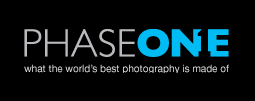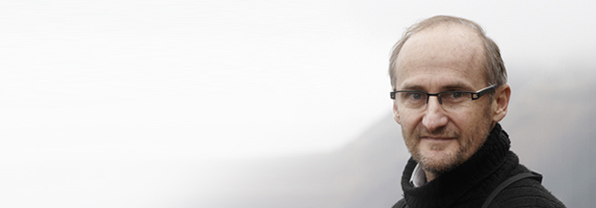
Versatile Travel Camera Ultimate Quality with Medium Format Digital
Now that you can shoot 4x5” quality with a medium format digital back, should we be re-writing the rules for high end travel photography? By Peter Eastway.
It's getting late. We're in the middle of America's Wild West and while not wilderness, it's a long way from anywhere of consequence. The sun has set, the twilight nearly gone and we're packing away our cameras. The problem we face is where will we stay tonight? Are there hotels at our preferred destination? Do they have spare beds? Can we reach there before they close - you know what small country towns are like, everything shuts up really early. Hmmm, and what about dinner...Although we're miles from the nearest town, miraculously there is a signal. I pull out my iphone, open up Google and type in our destination - Canyonlands, Utah. A hotel web page opens, I click on a telephone number and my phone dials the motel. Sure there are rooms available - smoking or non-smoking? And yes, they will be open when we arrive after 11 p.m. that night.How easy was that! Next question: what time does the sun come up in the morning? Google has that answer too.Travel has changed. And photography has changed, too. Just five years ago I would have been carting around a large format view camera with boxes of sheet film, changing bags, viewing hoods and light meters. Today I'm using a medium format SLR with a Phase One P45+ digital back, but what really blows me away is that I'm getting 4x5" large format quality with the convenience of SLR shooting.While my main interest on this trip is the landscape, I know that other subjects will crop up which simply won't be suited to a view camera approach. When travelling I need to be versatiile and flexible. And I need to be able to work quickly. Andthis is why I'm finding a digital back on a medium format digital SLR such a revolutionary way to shoot travel.
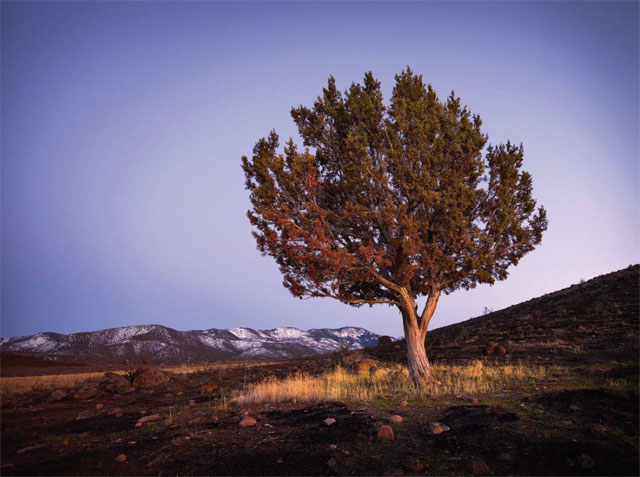
- Miles from Anywhere,Utah, USA. Photographed with a 28mm Mamiya lens and a Phase One P45+ back.
Special Order
Boarding the plane for Los Angeles earlier that week, I received a text message from Surfing World magazine asking if I could photograph surfer Shaun Tomson. Shaun lives an hour or so north of LA and I had a free day, so I replied no problem and called Shaun to tee up a time.I wondered what I would have done a few years ago if I had only brought my view camera withme? After all, I was aiming to shoot landscapes, not people. Would I have hired a smaller camera or tried to do something arty with large format? And if I wanted to try something arty, would Shaun have given me the time to set it up and shoot a few Polaroids?Travelphotographyofteninvolvesphotographing people and it’s a subject that’s easily shot with a medium format SLR: reflex viewing, immediate digital feedback for both me and my subject, and I can quickly switch from one lens to another to produce a selection of images for the magazine’s art director.
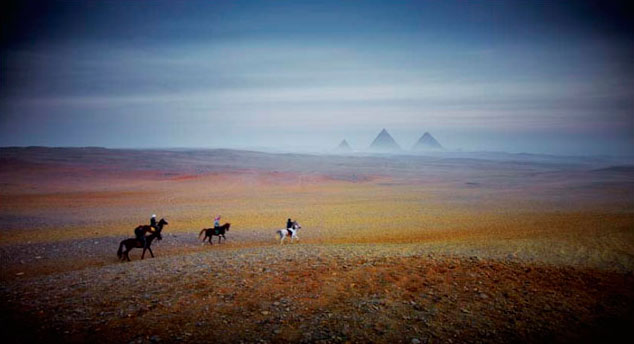
- Horse riders, Giza, Cairo. Photographed with a 28mm Mamiya lens and a Phase One P45+ back.
Pyramid Backdrop
I'm standing on top of a well-trodden sand dune. It's dark. In the distance stand the majestic pyramids of Giza, spot-lit against an inky black sky. From the suburbs below Calls to Prayer rise in melodic waves towards me and an icy cold breeze cuts through myjacket as I wait to shoot the dawn like thousands of photographers before me.Or do I? I hear a commotion behind me, cries of exhilaration and encouragement coupled with the distinctive thunder of horses galloping across packed earth. I feel rather than see a group of young Egyptian riders rush past me, their angled shapes barely visible in the darkness. My guide brings me my horse and we follow at a sedate walk out into the desert. In the half light I can perceive more dunes ahead and a wan light beaming from a small hut on the tallest.When we arrive, the young horsemen are sitting around a fire, their steads and cups of strong coffee steaming. It's just getting light and there's a silvery shimmer over the scene As a traveller, I am enthralled with what I see: horses huddling together with the pyramids behind them, the Egyptians inviting me to join them for a warming beverage, the colours and textures of their clothes, the saddles, the sand.The riders finish their drinks, take to their mounts and are gone, laughing and shouting into the distance. I run to the edge of the dune, changing lenses as quickly as I can to catch them disappearing into the sands.As I walked back to my cup of tea, I was struck by how easy it was for me to switch from one type of photography to another. Yes, I was still using a tripod - I had to because sunrise was still fifteen minutes away. And yes, I could still shoot my landscapes now that the horsemen had gone, but in comparison to what had just happened, my stock shots of the pyramids seemed boring! If I had been shooting with a view camera, whether on film or with a digital back, I would have been lost. I may have taken a few shots, but I wouldn't have captured the variety or the number I did with the medium format SLR. And yet each image was captured with large format quality.
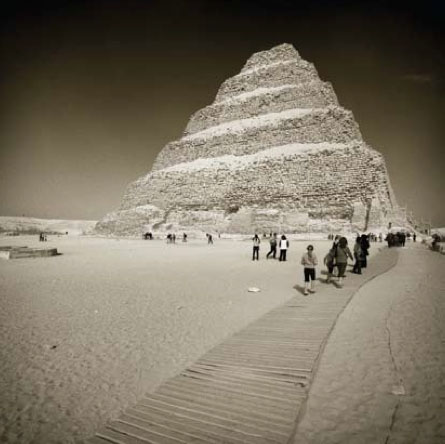
- Walking around Saqqara Pyramid. Photographed with a 28mm Mamiya lens and a Phase One P45+ back.
Tripod Free
So, do you have to shoot with a tripod when using a medium format digital back? Can you still get large format quality when shooting from the hip? Theory and commonsense would suggest that a tripod is the best way to ensure your images are razor sharp and certainly a 39-megapixel sensor will show up every deficiency in both lens design and camera technique. However, theory isn't always right!Walking around Saquara Pyramid later that day, I found it easier to leave my tripod behind and work hand-held. There were tourists everywhere, scrambling over rocks, streaming through corridors, lining up to be harrassed by trinket salesmen. And because everyone has a camera, I fitted in with the crowd and no one really looked twice at my camera. I felt like a stealth bomber, capturing large format quality without really trying.The trick is to keep your shutter speeds up as much as possible. With the 28mm and 35mm lenses, my results looked every bit as crisp and clear as my tripod mounted images. Similarly I could shoot with the 80mm and 75-150mm zoom without a hitch. For the 300mm, it was a little harder, but at 1/500 second, there was no doubt hand-held photography was very manageable with a medium format digital back.
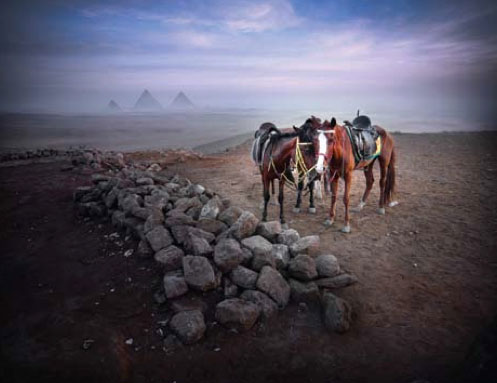
- Horses near Giza, Cairo. Photographed with a 28mm Mamiya lens and a Phase One P45+ back.
As a travel photographer, you never know what’s going to happen or how your photos are going to be used. Many images end up as small reproductions in magazines and brochures; a few may stretch to a double page spread in a book and the best images could end up as two-metre wide fine-art prints. In the past, we would just accept the limitations of the format we were using for the job, but technology has changed all that. Now travel photographers can work with a combination of versatility and quality that has never before been possible.And what’s more, the incredible dynamic range found on the medium format digital backs means you can work in difficult lighting situations and pull out images that simply aren’t possible with smaller sensors. While exposure bracketing might work for a tripod-mounted shot of a static landscape, you only get one chance when shooting dynamic travel photos of people, local life and action.The downside is that medium format digital cameras are larger than 35mm DSLRs and digital compact cameras, but this has always been the case. If you want the ultimate in image quality, you have always had to use a larger camera. Yet if you compare the size and weight of a medium format digital back ystem, it’s not that much heavier or bulkier than a pro DSLR. It’s certainly very workable.As a travel camera, nothing can match a medium format SLR with a digital back.
Peter Eastway











